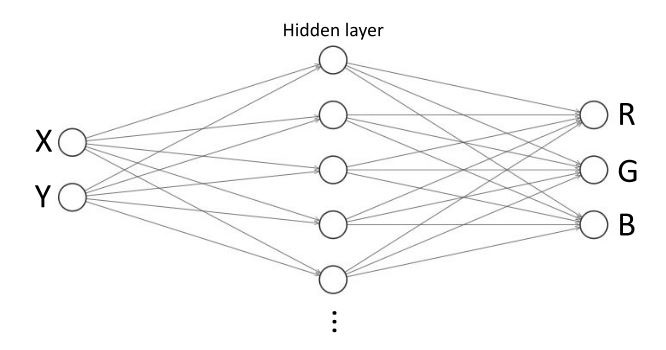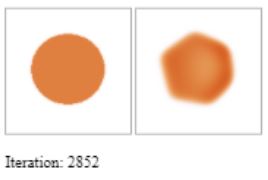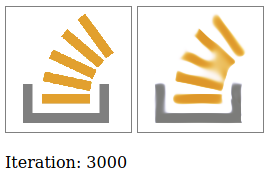I want to draw StackOverflow's logo with this Neural Network:
The NN should ideally become [r, g, b] = f([x, y]). In other words, it should return RGB colors for a given pair of coordinates. The FFNN works pretty well for simple shapes like a circle or a box. For example after several thousands epochs a circle looks like this:
Try it yourself: https://codepen.io/adelriosantiago/pen/PoNGeLw
However since StackOverflow's logo is far more complex even after several thousands of iterations the FFNN's results are somewhat poor:
From left to right:
- StackOverflow's logo at 256 colors.
- With 15 hidden neurons: The left handle never appears.
- 50 hidden neurons: Pretty poor result in general.
- 0.03 as learning rate: Shows blue in the results (blue is not in the orignal image)
- A time-decreasing learning rate: The left handle appears but other details are now lost.
Try it yourself: https://codepen.io/adelriosantiago/pen/xxVEjeJ
Some parameters of interest are synaptic.Architect.Perceptron definition and learningRate value.
How can I improve the accuracy of this NN?
Could you improve the snippet? If so, please explain what you did. If there is a better NN architecture to tackle this type of job could you please provide an example?
Additional info:
- Artificial Neural Network library used: Synaptic.js
- To run this example in your localhost: See repository






